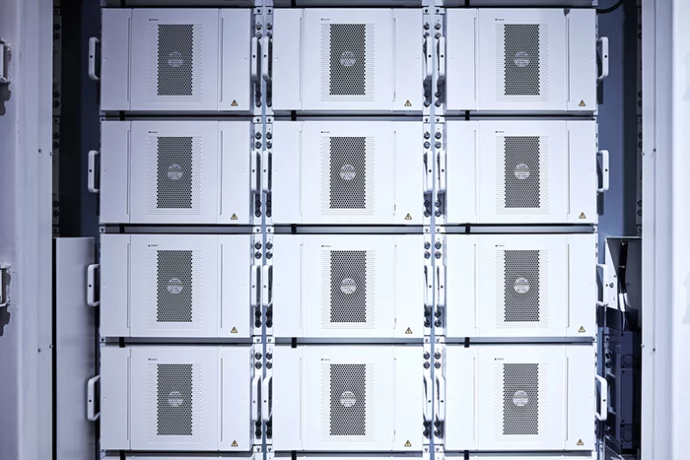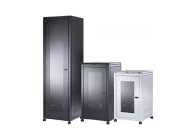How Energy Storage Works with Data Centre UPS to Improve Resilience
Data centres are energy-intensive facilities requiring robust power infrastructure to maintain uptime and support business continuity. With rising energy costs, a growing emphasis on sustainability, and the risk of grid instability, data centre operators are seeking innovative ways to optimize energy usage. One promising solution lies in leveraging energy storage systems (ESS) in conjunction with uninterruptible power supplies (UPS) and the national grid.
By integrating energy storage into their power infrastructure, data centres can reduce energy consumption, lower operational costs, and enhance the resilience of their critical power paths. This article explores how energy storage works in this context, its benefits, and why it represents a game-changing opportunity for modern data centres.
The Role of Energy Storage in Data Centres
Energy storage systems serve as an intermediary between a data centre UPS and the national grid. These systems can store excess or low-cost electricity for later use, helping data centres better manage their energy demands and providing additional resilience to power cuts (https://powercuts.nationalgrid.co.uk/power-cut-map).
Key components of an energy storage system include:
- Batteries: Lithium-ion batteries are commonly used due to their high energy density, efficiency, and durability.
- Battery Management Systems (BMS): Ensures safe operation, optimal performance, and extended battery lifespan.
- Energy Management Software: Controls when and how energy is stored or discharged, often in response to grid conditions or energy pricing.
When paired with an uninterruptible power supply, energy storage not only provides backup power during outages but also actively supports grid stabilisation and energy efficiency.
The Benefits of Energy Storage for Data Centres
There are several benefits for data centres for coupling energy storage to their UPS systems.
Reducing Energy Usage
Energy storage enables data centres to optimise when they consume electricity, helping to reduce overall energy usage through:
- Load Shifting: during periods of low electricity demand or lower tariffs (e.g., at night), the energy storage system can charge from the grid. This stored energy can then be used during peak periods, reducing reliance on grid power during high-demand times.
- Demand Response Participation: data centres can participate in demand response programs by reducing or shifting power usage during grid stress events, earning financial incentives while supporting grid stability.
By strategically managing power consumption, energy storage minimizes waste and aligns with grid efficiency initiatives.
Lowering Operational Costs
Energy costs are one of the largest expenses for data centres. Energy storage can help reduce these costs by:
- Avoiding Peak Tariffs: the UK energy market features time-of-use pricing, with higher tariffs during peak demand hours. Energy storage allows data centres to avoid peak tariffs by discharging stored energy when prices are high.
- Leveraging Renewable Energy: storage systems can store electricity generated from on-site renewable sources like solar panels. This reduces dependency on the grid and further lowers energy expenses.
- Grid Services Revenue: data centres can offer stored energy back to the grid during shortages, earning income through grid-balancing programs like the UK’s National Grid Demand Side Response (DSR) schemes.
Improving Uptime and Resilience
The critical power path in a data centre must be highly reliable to prevent downtime. Energy storage enhances power resilience by:
- Seamless Power Supply: in the event of a grid outage, an energy storage system works with the UPS to instantly deliver backup power, ensuring continuous operation until the generators come online.
- Grid Independence: during grid instability or extreme weather events, stored energy can act as a buffer, reducing reliance on the national grid.
- UPS Total Cost of Ownership (TCO): energy storage reduces the strain on UPS batteries, extending their lifespan and improving their readiness to handle emergencies.
By strenghtening the critical power path, energy storage ensures uninterrupted operations and enhances disaster preparedness.
Supporting Sustainability Goals
Sustainability is a growing concern for data centres, particularly with increasing regulatory and public scrutiny. Energy storage contributes to greener operations by:
- Maximising Renewable Integration: stored energy can be sourced from renewables, reducing the data centre’s carbon footprint.
- Improving Energy Efficiency: by managing power more effectively, storage systems reduce wasted energy and improve overall efficiency.
- Participating in Grid Decarbonisation: data centres can contribute to the UK’s net-zero goals by participating in grid-balancing programs, which support the integration of intermittent renewable energy sources.
How Energy Storage Systems Integrate with the Critical Power Path
Energy storage plays a crucial role in supporting the critical power path, which includes the national grid, UPS, power distribution units (PDUs), and backup generators. Here’s how it integrates:
During Normal Operations
- Energy storage systems charge during periods of low demand or low-cost electricity.
- They work alongside the UPS to manage the facility’s energy needs and support grid stability by discharging energy during peak periods.
During Grid Outages
- If a grid failure occurs, the energy storage system acts as an immediate power source while the UPS ensures uninterrupted power delivery.
- This gives generators time to start, maintaining continuous power flow to critical IT loads.
Optimising the UPS:
- Energy storage systems can reduce the cycling and wear of UPS batteries, enhancing their lifespan and readiness.
Case Study: Energy Storage and Data Centres in the UK
Scenario: Peak Demand Management
A UK-based data centre uses a lithium-ion energy storage system integrated with its UPS. During off-peak hours (e.g., overnight), the system charges from the grid at low electricity tariffs. During peak hours, when tariffs are higher, the stored energy is discharged to power the facility, avoiding premium pricing.
This strategy reduces energy costs by up to 20% annually while supporting grid stability by decreasing demand during high-load periods.
Scenario: Renewable Energy Integration
A data centre equipped with rooftop solar panels uses an energy storage system to store excess solar energy generated during the day. This stored energy powers the facility overnight, minimizing reliance on grid power and significantly lowering carbon emissions.
The Challenges and Considerations for Implementation
While energy storage offers significant benefits, there are challenges to consider:
- High Upfront Costs: lithium-ion batteries, while efficient, come with a high capital cost. However, falling prices and long-term savings often justify the investment.
- Complex Integration: integrating energy storage into existing power infrastructure requires careful planning and expertise. Compatibility with UPS systems and grid services must be ensured.
- Regulatory Compliance: participation in UK grid programs like DSR requires adherence to specific regulations and standards.
- Scalability: the energy storage system must be sized correctly to meet the data centre’s current and future needs.
The Future of Energy Storage in Data Centres
As technology advances and energy demands grow, energy storage systems will play an increasingly critical role in data centre operations. Key trends include:
- Declining Battery Costs: the cost of lithium-ion batteries continues to decrease, making energy storage more accessible.
- Advancements in Software: intelligent energy management systems will improve the efficiency and responsiveness of storage solutions.
- Integration with Microgrids: data centres could become part of localized microgrids, using energy storage to balance supply and demand at a community level.
- Focus on Sustainability: pressure to reduce carbon footprints will drive further adoption of energy storage and renewable energy solutions.
Conclusion
Integrating energy storage systems between UPS systems and the UK national grid presents a powerful opportunity for data centres to reduce energy usage, lower operational costs, and enhance resilience. By strategically leveraging energy storage for load shifting, peak tariff avoidance, and renewable energy integration, operators can achieve greater efficiency and sustainability while ensuring the uptime of critical systems. As energy demands rise and grid conditions evolve, energy storage is no longer just a backup solution—it’s a strategic investment in the future of data centre operations. With the right planning and implementation, it offers a pathway to more resilient, cost-effective, and environmentally friendly power infrastructure. For more information on our energy storage systems please contact our Projects Team.

























